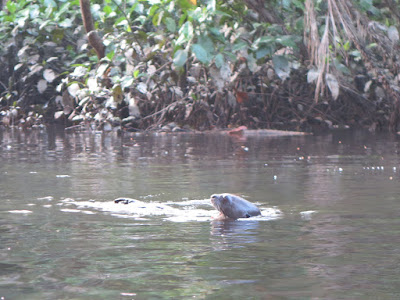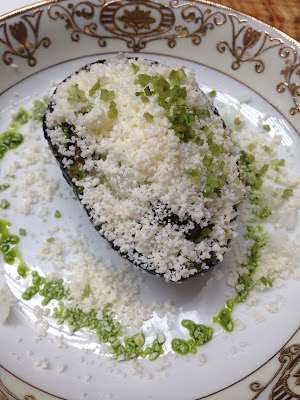Galapagos is a trip of a lifetime. It's one of the few places in the world that I would visit again. And I am the one that hates boat trips. Besides aquaphobia, I am very prone to seasickness.
This trip required plenty of research. First we had to decide between day trips or a cruise trip.
The day trips at first seemed the best option because they are cheaper. But in fact there are several cons, like the long hours to reach the islands, the better islands to spot wildlife are further away and you'll arrive there very late in the morning. Plus the day trip boats are small to navigate in rocky open seas.
The big boats tend to be cheaper and more stable in open seas.
We ended up booking a 5 days trip in a standard cabin in the Galapagoss Legend through an Ecuadoran travel agency.
You have to reserve well in advance, at least 6 months. At the time we were said and done, there was just one standard cabin left.
One of the cons pointed out about big boats in several travel forums is the large amount of people embarking, disembarking and visiting the island at same time. I didn't find it so bad. We were divided by groups of 10 or less people. Each group had a different guide assigned. In the islands the guides would find alternative paths to avoid the other groups. We were lucky though, since our boat who can hold up to 90 people only had little over 40 passengers.
We visited all the Galapagos's highlights, Sullivan Bay, Black Turtle Cove, Rabida, Urbina Bay, Tagus Cove, Espinosa Point and Vicente Roca. All the islands are different and they are all amazing.
We had the chance to see countless animals as the blue-footed boobies and snorkeling with pinguins and sea lions.
A typical day trip includes a shore trip after breakfast, snorkeling after lunch and another trip to shore in the afternoon. For the ones that don't want to do snorkeling, there are other activities on board, as watching documentaries. There are also some lectures in the middle, not very interesting though.
There are lots of room to improvement concerning the guides. Although they are among the best professionals in Galapagos, they didn't seem very committed.
Food was surprisingly good and the cabins were nice and comfortable. We got upgraded to a cabin with large windows are more space which was really cool.
Essentials: Light clothes, sneakers, hat, sunscreen and medicine for seasickness. I got motion sickness patches, they were very effective but when I finally took it off, I got dizzy and my vision was blurry. It took me a while to recover.
This trip required plenty of research. First we had to decide between day trips or a cruise trip.
The day trips at first seemed the best option because they are cheaper. But in fact there are several cons, like the long hours to reach the islands, the better islands to spot wildlife are further away and you'll arrive there very late in the morning. Plus the day trip boats are small to navigate in rocky open seas.
 |
| Galapagos Legend |
It took us weeks to analyze and select the best cruises. The U.S. embassy in Ecuador has a list of the boats involved in accidents and non-reliable operators.
There are two options, small or big boat cruises. Both have positive and negatives aspects. Four important factors for us were route, knowledgeable guides, price and boat stability.
 |
| Sea lions |
The big boats tend to be cheaper and more stable in open seas.
We ended up booking a 5 days trip in a standard cabin in the Galapagoss Legend through an Ecuadoran travel agency.
You have to reserve well in advance, at least 6 months. At the time we were said and done, there was just one standard cabin left.
 |
| Blue-footed booby |
One of the cons pointed out about big boats in several travel forums is the large amount of people embarking, disembarking and visiting the island at same time. I didn't find it so bad. We were divided by groups of 10 or less people. Each group had a different guide assigned. In the islands the guides would find alternative paths to avoid the other groups. We were lucky though, since our boat who can hold up to 90 people only had little over 40 passengers.
 |
| Penguin |
We visited all the Galapagos's highlights, Sullivan Bay, Black Turtle Cove, Rabida, Urbina Bay, Tagus Cove, Espinosa Point and Vicente Roca. All the islands are different and they are all amazing.
We had the chance to see countless animals as the blue-footed boobies and snorkeling with pinguins and sea lions.
 |
| Rabida Island |
Food was surprisingly good and the cabins were nice and comfortable. We got upgraded to a cabin with large windows are more space which was really cool.
 |
| Baby sea lion sleeping next to their mother |
Essentials: Light clothes, sneakers, hat, sunscreen and medicine for seasickness. I got motion sickness patches, they were very effective but when I finally took it off, I got dizzy and my vision was blurry. It took me a while to recover.

















































